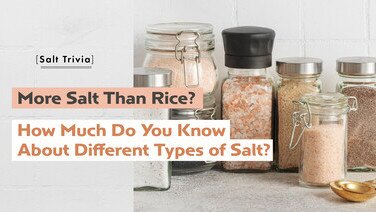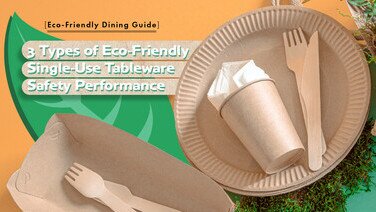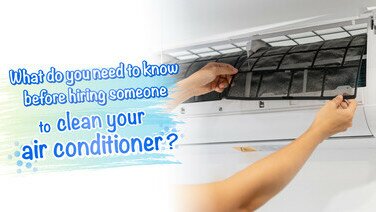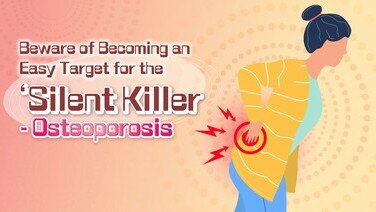Multi-purpose Disinfectant Sprays
Since the pandemic, many disinfectant sprays have claimed to be multi-purpose and can be used immediately without dilution/rinsing. They claimed that using could disinfect the environment, objects, and hands. Are they as effective as they claimed? Watch tour YouTube video and read on: https://www.youtube.com/watch?v=qnEux4KEnRg
Active Ingredients in Disinfectant Sprays
The Council has tested 15 disinfectant sprays on the market, of which 9 claimed to have hypochlorous acid (HOCl) (also known as "hypochlorous acid water"), with concentrations ranging from 50ppm to 210ppm. Other components found were chlorine dioxide (ClO2), oxychlorine compounds or plant extracts.
The Concentration of Available Chlorine Varies Greatly
The National Institute of Technology and Evaluation (NITE) under the Ministry of Economy, Trade and Industry of Japan pointed out that hypochlorous acid water (acidic) can be used for disinfection of environmental surfaces in non-medical places. Still, it must contain a sufficient level of available chlorine concentration, which has to be equal to or more than 35ppm. For products made of sodium dichloroisocyanurate (NaDCC), the level of available chlorine concentration should be equivalent to or more than 100ppm to be effective against the new coronavirus. However, it should be noted that the study did not evaluate its safety and use for hands and space disinfection.
Among the 9 hypochlorous acid models tested by the Council in 2020, 8 were detected with an available chlorine concentration of 50mg/L (i.e. 50ppm) or above. Still, the concentrations of three of the products decreased gradually (about 15% to 20% by day 14) after being opened and used for a period of time. This is due to the inherently unstable nature of hypochlorous acid. Thus, consumers are advised to buy "fresher" manufactured batches, use them as soon as they are opened, and avoid bulk hoarding or buying large packages.
Can it Effectively Eliminate the Novel Coronavirus?
This question is what revolves around the minds of consumers. The Council tested the efficacy of the disinfectant on a harder-to-kill virus - Adenovirus Type 5. Theoretically, if the product is effective against this non-enveloped virus, it should be able to deal with any enveloped virus such as the new coronavirus (SARS-CoV-2).
The test found that 2 models had an outstanding performance in eliminating the test virus. After the test virus was exposed to the disinfectants, the viral infectivity was reduced by 99.95% to more than 99.99% (a 99.99% indicates that the activity of the virus is almost completely inhibited). However, 2 models had little or no effect on the infectivity of the test virus.
The Bactericidal Efficacy Varies
The Council tested the efficacy of disinfectants in killing the common Escherichia coli K12 and Staphylococcus aureus, respectively, and 8 of them had a killing rate of more than 99.999% against the two targeted bacteria, which was in line with their claimed performance. However, some of the remaining products could not effectively deal with two test bacteria simultaneously. Among them, the two chlorine dioxide-based models had a killing rate of less than 28% of both of the test bacteria.
Strong Acid/Alkali Can Irritate the Human Body
If the disinfectant is too acidic or alkaline, it can irritate the skin (especially those with delicate skin, such as young children). In addition, when using disinfectants, the eyes and respiratory tract can contact the disinfectant. Strong acid or strong alkali products may cause mild to moderate irritation, and severe cases may increase the chance of asthma (so in any case, it is not recommended to spray disinfectants on the human body).
During the test, the pH values of the hypochlorous acid models and models marketed as containing plant ingredients, ranging from pH 3.9 to pH 7.7, were identified as weakly acidic to neutral. However, the pH values of the chlorine dioxide-based models vary quite largely. One model was strongly acidic (pH 2.4), and the other model was slightly alkaline (pH 9.4).
Alcohol-based Preparation and 1:99 Diluted Bleach Are of Higher Efficacy and Better Value?
Some consumers may believe that the modern disinfectant spray is more effective in disinfecting and sterilising than the usual alcohol-based preparation and 1:99 diluted bleach solution. The truth is that the Council has also tested the two commonly used disinfectant solutions, and the killing rates of the two test bacteria have reached more than 99.999%. In the test against the adenovirus, the infectivity of the test virus also decreased by 87.98% and 99.83%, respectively. It is a more reliable and cheaper choice than unstable hypochlorous acid water.
Want to Disinfect Effectively? Learn These 5 Steps!
The efficacy of disinfectants can be affected by many factors such as the amount of spray, spraying distance, action time, method of application, and surface material of objects. The disinfection efficacy of the product may also be gradually declined upon opening, use and storage. For effective disinfection, remember to pay attention to the following 5 steps!
| A prerequisite for effective disinfection is a good cleaning procedure. It is recommended to use detergent and water to remove the dirt on the object's surface before proceeding with the disinfection step. |
|---|---|
| Refer to the products' recommendations for suitable space for application, applicable materials and surfaces (e.g. hard, smooth, non-porous or porous). |
| Ensure that disinfected surfaces are kept wet for the specified duration of exposure. |
| Ensure that the object's surface is adequately sprayed with disinfectant and allow the disinfectant to stay on the surface of the object for more than 5 minutes or scrub repeatedly. Suppose it is suspected that the risk of contamination of the object is high. In that case, it is recommended to prolong the action time of the disinfectant and/or increase the amount or concentration of the disinfectant. |
| Consumers should not open the disinfectant bottle frequently or dump the disinfectant into another bottle for storage. Otherwise, the stability and disinfection effect of the disinfectant may be affected. It should also be stored away from heat and light. |
Also, you are reminded to wear rubber gloves (especially those with eczema) when cleaning and disinfecting your home to reduce prolonged exposure to chemicals on your skin.
Moreover, remember to keep your hands clean. When hands are visibly dirty, after touching public objects, body fluids or respiratory secretions, after going to the toilet, after cleaning up excrement for children and pets, before eating and preparing food, and before touching eyes, mouth and nose, thoroughly clean your hands with hand sanitiser (rub for at least 20 seconds) and wash them thoroughly with water.
On Face Masks
In the past year, many local manufacturers have started producing face masks, and local mask supply has, as a result, become more stable. The Council again examined the quality of face masks for sales in the market. Among the 30 models tested, 18 claimed to originate from Hong Kong.
6 Major Indices for Choosing Face Masks
Previously, we introduced 4 test data to pay attention to when choosing face masks and determining their protection levels (For details, please refer to the article,《Anti-Epidemic Gadgets: 7 Selection Criteria for Face Masks and Hand Sanitisers》) :
| Index 1 | Bacterial Filtration Efficiency (BFE) |
|---|---|
| Index 2 | Particle Filtration Efficiency (PFE) |
| Index 3 | Delta P (Differential Pressure) (Breathability) |
| Index 4 | Synthetic Blood Penetration Resistance (Water Resistance) |
Besides, consumers may also pay attention to the following two additional indices to select better products:
| Index 5 | Bioburden: Wearing masks exceeding the limit of total bacterial count for a long period of time may lead to facial discomfort and potential health risk for people with weaker immune systems. |
|---|---|
| Index 6 | Mask Harness Tension: Whether it is easy for the ear straps to be detached from the main body of the face mask. |
Summaries of Face Mask Test Results
Watch this video and the summaries in the texts below now:
| BFE and PFE | The average BFE levels of all models were above 95%, and the PFE levels of most models were above 95% (only for one model was the average PFE level below 90%). The performance was on the whole satisfactory. |
|---|---|
| Differential Pressure | The breathability of 6 models was outstanding. |
| Synthetic Blood Penetration Resistance | The Council tested 30 models in the market under three pressure conditions. One model claiming to be an ASTM Level 2 one only passed the test under Level 1 Pressure, and its performance was considered unsatisfactory. |
| Bioburden | For 3 models, the colony-forming unit per gram was above the EU limit, and for one of them, it even far exceeded the standard. |
| Mask Harness Tension | The breaking strength of 11 models was relatively low, and the ear straps were easy to be torn apart. Consumers need to carefully handle ear straps while putting on and taking off face masks. |
More detailed results of tests on disinfectant sprays and face masks can be found in these two CHOICE articles: "How Effective Are Multi-purpose Disinfectant Sprays? Effectiveness Affected by Various Factors, CHOICE Magazine Issue 531(Chinese Version only), and "Latest Test on the Efficacy of 30 Surgical Mask Models – Help Consumers Fight the Pandemic Together", CHOICE Magazine Issue 530(Chinese Version only).


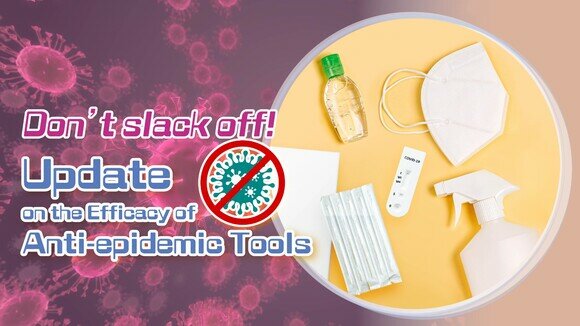




![[Baby Snacks Guide] Who Says Snacks Can’t Be Healthy?](/f/guide_detail/415742/376c212/bb%20snack.jpg)
